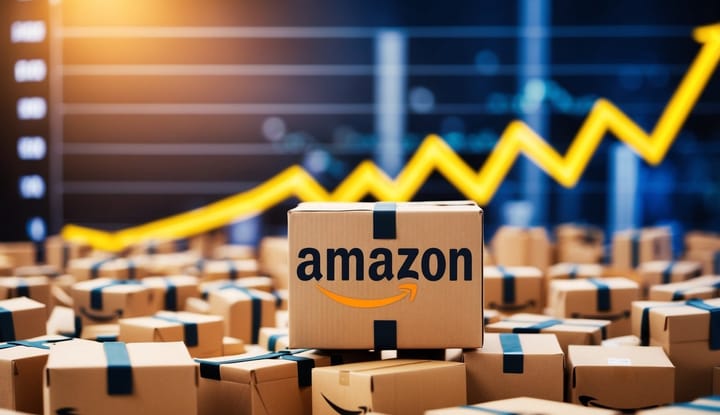Amazon Seller Policy Updates: Key Changes Impacting Amazon Sellers

Amazon sellers face important policy changes in 2024. These updates affect various aspects of selling on the platform, from compliance requirements to return policies and delivery standards. Starting September 30, 2024, sellers must submit and get approval for product documentation to avoid listing issues.

The new rules also impact returns. From June 1, 2024, Amazon will charge a returns processing fee for items with high return rates in most categories. This change aims to improve product quality and reduce unnecessary returns.
Delivery standards are getting stricter too. By September 25, 2024, sellers need to maintain a minimum 90% on-time delivery rate for their products to stay listed on Amazon.com. This push for better delivery performance seeks to enhance customer satisfaction.
Key Takeaways
- New compliance rules require product documentation approval by September 30, 2024
- Returns processing fees start June 1, 2024 for high-return rate items
- Sellers must meet a 90% on-time delivery rate by September 25, 2024 to keep listings active
Overview of Amazon Seller Central Policy Changes
Amazon has introduced significant updates to its seller policies for 2024. These changes aim to improve product compliance and seller performance tracking.
New ASIN Creation Guidelines
Amazon now requires sellers to submit product compliance documentation before listing new items. This rule takes effect on September 30, 2024. Sellers must provide proof that their products meet safety and regulatory standards.
The process involves uploading certificates and test reports to Seller Central. Amazon will review these documents before approving new ASINs. This change affects all product categories.
Sellers should prepare by gathering necessary paperwork in advance. They may need to work with suppliers or testing labs to obtain required certifications.
Updated Account Health Metrics
Amazon has revised its account health metrics to better assess seller performance. The new system focuses on customer satisfaction and order fulfillment speed.
Key changes include stricter targets for on-time delivery and valid tracking rates. Sellers now need to maintain a 95% on-time delivery score, up from 90% previously.
Amazon also added a new metric for customer service response times. Sellers must reply to buyer messages within 24 hours to maintain good account health.
These updates push sellers to improve their operational efficiency. Meeting the new standards helps avoid account suspensions and boosts visibility in search results.
Brand Owner Benefits and Responsibilities
Brand owners on Amazon gain new perks and duties in 2024. These changes aim to boost product authenticity and improve the customer experience.
Enhanced Brand Protection
Brand owners now have more control over their listings. They can stop other sellers from altering product details. This helps keep product info accurate. Brand owners can also spot and report fake items more easily.
Amazon gives brand owners special tools. These tools let them find and remove fake listings fast. Brand owners can block bad sellers from listing their products. This keeps product quality high.
Brand owners must watch their listings closely. They need to act quickly if they see issues. Staying on top of things protects their brand image.
Packaging Requirements for Brand Owners
Amazon has new rules for product packaging. Brand owners must follow these rules carefully. All items need clear, easy-to-read labels. The labels must show the brand name and product info.
Packaging should be sturdy to prevent damage during shipping. Brand owners must use materials that are safe for the environment when possible. Amazon may check packages to make sure they meet the rules.
Brand owners who follow these rules can avoid problems. Good packaging helps customers get their items safely. It also makes returns easier if needed.
Fulfillment by Amazon (FBA) Policy Adjustments
Amazon has made several key changes to its FBA policies for 2024. These updates affect product images, inventory packaging, and how damaged items and customer returns are handled.
FBA Product Images Standards
Amazon now requires higher quality product images for FBA listings. Sellers must provide clear, high-resolution photos that show the item from multiple angles.
The main product image must have a white background and show the entire item. It should take up at least 85% of the frame.
Additional images can showcase product details, size comparisons, and usage examples. Amazon recommends including at least 5-7 images per listing.
Images must be at least 1000 pixels on the longest side. Blurry or pixelated photos are not allowed.
FBA Inventory Packaging Changes
Amazon has updated its packaging rules for FBA inventory. All items must now be sealed in protective packaging before shipping to fulfillment centers.
Fragile items require extra cushioning like bubble wrap or air pillows. Amazon suggests using frustration-free packaging when possible.
Each product must have a scannable barcode on the outside of its packaging. This helps with inventory tracking and order processing.
Oversized items now need special handling labels. These labels alert warehouse staff to use caution when moving large or heavy products.
Damaged Items and Customer Returns
Amazon has changed how it handles damaged items and customer returns for FBA sellers. The company now automatically reimburses sellers for items lost or damaged in fulfillment centers.
Sellers have 18 months to file claims for damaged inventory. After that, Amazon will not process reimbursement requests.
For customer returns, Amazon inspects items before restocking. Products in new condition are added back to sellable inventory.
Items returned in used condition are set aside. Sellers can choose to have these products returned to them or disposed of by Amazon.
Amazon now charges a fee for processing customer returns. This fee varies based on the item's size and category.
Effective Product Listings and Marketing Practices

Crafting compelling product listings and using smart marketing tactics are key to success on Amazon in 2024. These strategies can boost visibility, drive traffic, and increase sales.
Optimizing Product Titles and Descriptions
Product titles on Amazon should be clear, concise, and keyword-rich. Include the brand name, key features, and target keywords in the first 200 characters. This helps with search rankings and click-through rates.
For descriptions, focus on benefits rather than just features. Use bullet points to highlight key selling points. Include relevant details like size, color, and materials. Make sure to address common customer questions to reduce returns.
Keep language simple and avoid jargon. Use short sentences and paragraphs for easy scanning. Proofread carefully to catch any errors that could hurt your listing's credibility.
Bundling Products for Enhanced Sales
Product bundles can increase average order value and provide more value to customers. Group complementary items together, like a camera with accessories or a skincare set.
Create unique bundle names and highlight the savings compared to buying items separately. Use high-quality images showing all included products. Clearly list bundle contents in the description.
Test different bundle combinations to find what resonates with your target audience. Consider seasonal bundles for holidays or special events. Offer exclusive bundles to differentiate from competitors.
Seller Support and Resources

Amazon provides sellers with various support services and resources to help them succeed on the platform. These tools aim to assist sellers in resolving issues and navigating legal matters.
Navigating Seller Support Services
Seller Central is the main hub for Amazon sellers to manage their accounts and access support. It offers a help section with guides and FAQs on common topics. For specific issues, sellers can contact Seller Support through email, phone, or chat. Response times vary based on the urgency of the matter.
Seller Support can help with account issues, listing problems, and payment questions. They also assist with policy clarifications and provide guidance on best practices. It's important for sellers to clearly explain their issues and provide relevant details when contacting support.
Frequently Asked Questions

Amazon sellers need to stay up-to-date on policy changes for 2024. These updates affect product listings, shipping, performance metrics, returns, fees, and data management.
Q: What are the new requirements for product listings under Amazon's 2024 seller policy?
Starting September 30, 2024, Amazon requires sellers to submit product compliance documents before listing new items. This rule aims to boost safety and quality standards.
Sellers must provide proof that their products meet industry regulations. Amazon will review and approve this documentation before allowing new listings.
Q: How do the updated 2024 policies affect shipping and logistics for Amazon sellers?
Amazon has made changes to its FBA (Fulfillment by Amazon) program for 2024. The company now offers more storage options for sellers.
Sellers can choose short-term or long-term storage based on their needs. This helps manage inventory costs and improves efficiency.
Q: What changes have been implemented in Amazon's seller performance metrics this year?
Amazon has updated its seller performance metrics to focus more on customer satisfaction. The new system puts greater weight on product quality and accurate descriptions.
Sellers are now rated on their response times to customer inquiries. Fast and helpful responses can boost a seller's ranking on the platform.
Q: Can you detail the updates to Amazon's return and refund policies for third-party sellers?
Amazon has simplified its return process for third-party sellers in 2024. Sellers now have more control over return reasons and refund amounts.
The platform has introduced a new "partial refund" option. This allows sellers to offer partial refunds for items returned with minor issues.
Q: What are the revised fee structures for Amazon sellers introduced in 2024?
Amazon has adjusted its fee structure for sellers in 2024. The company now offers tiered pricing based on sales volume.
Sellers with higher sales volumes can benefit from lower fees. This change aims to reward successful sellers and encourage growth on the platform.
Q: How should sellers manage customer data in compliance with Amazon's latest privacy and security regulations?
Amazon has tightened its data protection rules for sellers in 2024. Sellers must now use Amazon's approved tools for collecting and storing customer data.
The platform requires sellers to complete a data security training course. This ensures all sellers understand and follow proper data handling practices.
Ready to Stay Compliant—and Competitive—on Amazon?
Join our mini-course at WAH Academy and get up to speed on Amazon’s latest policy updates, so you don’t risk your listings or sales.
No stress. No confusion. Just clear guidance to help you stay ahead.
Tap the button and keep your Amazon business on the right track today.



